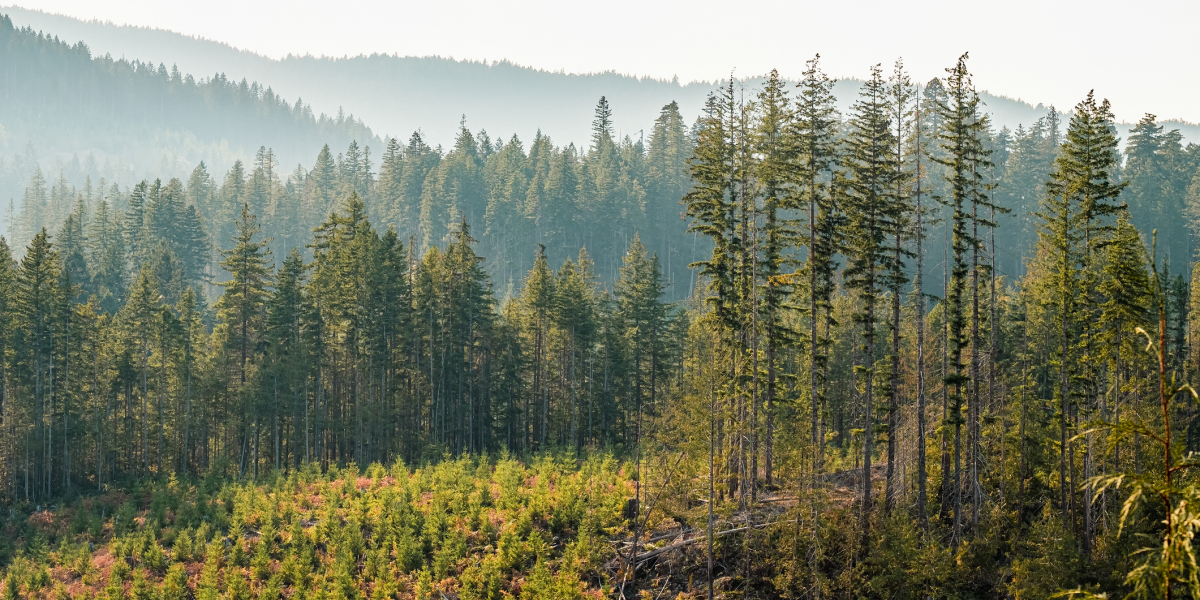
Canada’s forestry sector sits at the intersection of climate change and nature conservation. The growing pressure from biodiversity loss and climate change poses risks to the forestry sector’s sustainability and prosperity, and the integrity of forest ecosystems. Forests provide Canadians with essential ecosystem services that underpin our economic health and productivity, like clean water, timber and carbon storage. Forestry activities also influence these systems: logging can alter habitats and release stored carbon.
Financial disclosures help make these connections between economic activities and the natural environment more visible. They provide a standardized way for organizations to measure and report on how they depend on and affect climate and nature. This transparency allows companies to spot risks—like damage from wildfires, floods or resource shortages—and find opportunities to innovate, such as investing in products or practices that are more resilient to climate change.
The emergence of standardized global frameworks such as the International Financial Reporting Standards Climate-related Disclosures and the Taskforce on Nature-related Financial Disclosures (TNFD)—developed by global standard-setters—marks a critical step toward building more resilient and informed markets. These frameworks help companies include climate and nature in their decision-making, support investors and regulators in making informed decisions and direct capital toward businesses that manage nature and climate responsibly.
Canada’s forestry sector has been completing impact assessments and reporting on sustainability practices for a long time, often guided by voluntary certification standards such as those established by my project partner, the Sustainable Forestry Initiative (SFI). By bringing transparency and a common structure to environmental reporting, globally standardized disclosures can help the sector streamline sustainable forest-management reporting. However, the adoption of global frameworks in Canada, particularly the TNFD, remains limited.
My new research, funded by MITACS and SFI, explores how the sector can build on existing experience with reporting standards to support the implementation of global disclosure standards that drive climate and nature-positive outcomes. The opportunity is clear; the path, less so. This research works to uncover it.
Going beyond climate-related disclosures
Managing forests with climate and nature in mind allows Canada to tackle two crises at the same time. Forests are home to most of Earth’s land-based biodiversity. Canada has the world’s third-largest forest area, making forests a cornerstone of any national strategy to address climate change and nature loss. Natural climate solutions (strategies that protect, manage, and restore ecosystems to absorb and store carbon) could cut global emissions by up to 37% in the next five years. Forests represent about two-thirds of this potential.
Companies that understand, measure and publicly report on how their activities are dependent on and affect nature and climate can gain clearer insights into interdependencies and trade-offs. For example, some forest-management activities that improve climate resilience—such as removing debris from the forest floor to reduce fire risk—can inadvertently harm biodiversity by disturbing nature. It can also highlight opportunities, such as how investments in sustainable forest management protect biodiversity and store more carbon.
How this research will help
Natural resource-dependent sectors like forestry are crucial to halting and reversing climate change and nature loss. The way these businesses manage land, harvest wood and respond to climate impacts can either help or harm nature and the climate.
Our goal is to support the forestry sector in navigating potential trade-offs and unlocking win-win outcomes for businesses, climate and biodiversity. By exploring ways to make climate and nature visible in financial decision-making, this research will help build a forestry sector and an economy that thrives alongside nature.
To begin, we will assess forestry company disclosures and surface the challenges they face in doing so. We will explore how global disclosure and voluntary certification standards are aligned and identify potential areas of tension that may arise in the adoption of nature and climate disclosures. Understanding these trade-offs will help the sector balance competing priorities and identify optimal solutions. Finally, because disclosure frameworks, especially for nature, are still new, the results of this research can be used to design recommendations for sector-specific disclosure guidelines, particularly within the TNFD, which are tailored to the realities of the forestry sector.
Stay tuned for our findings!